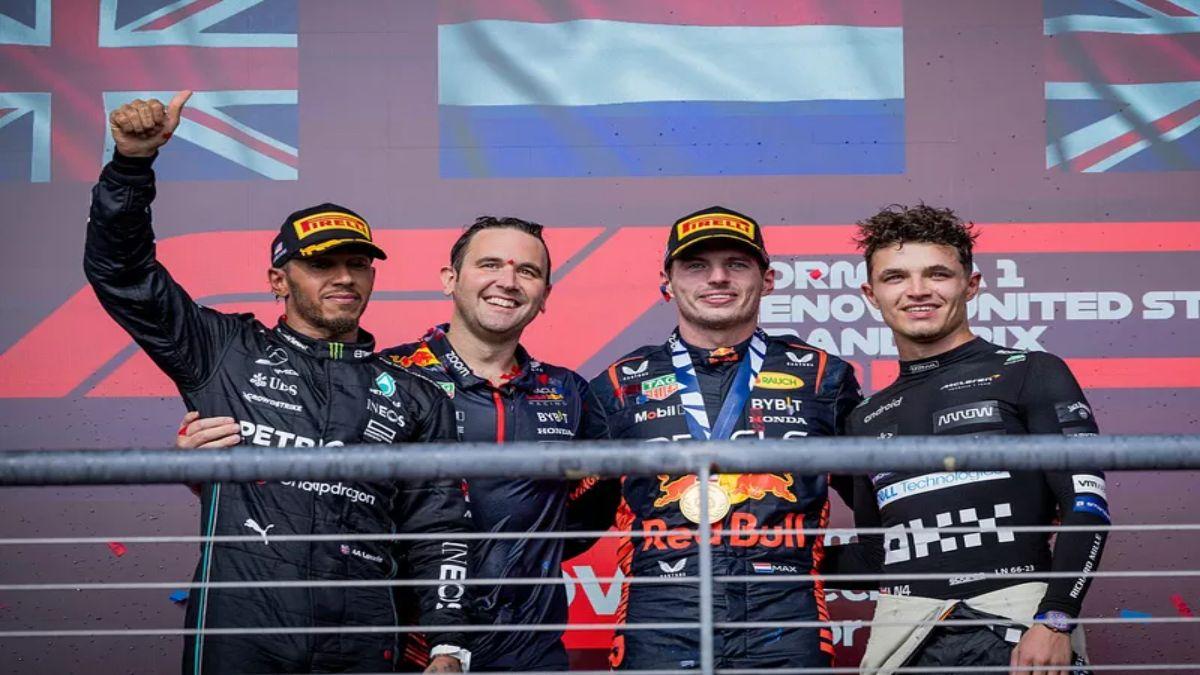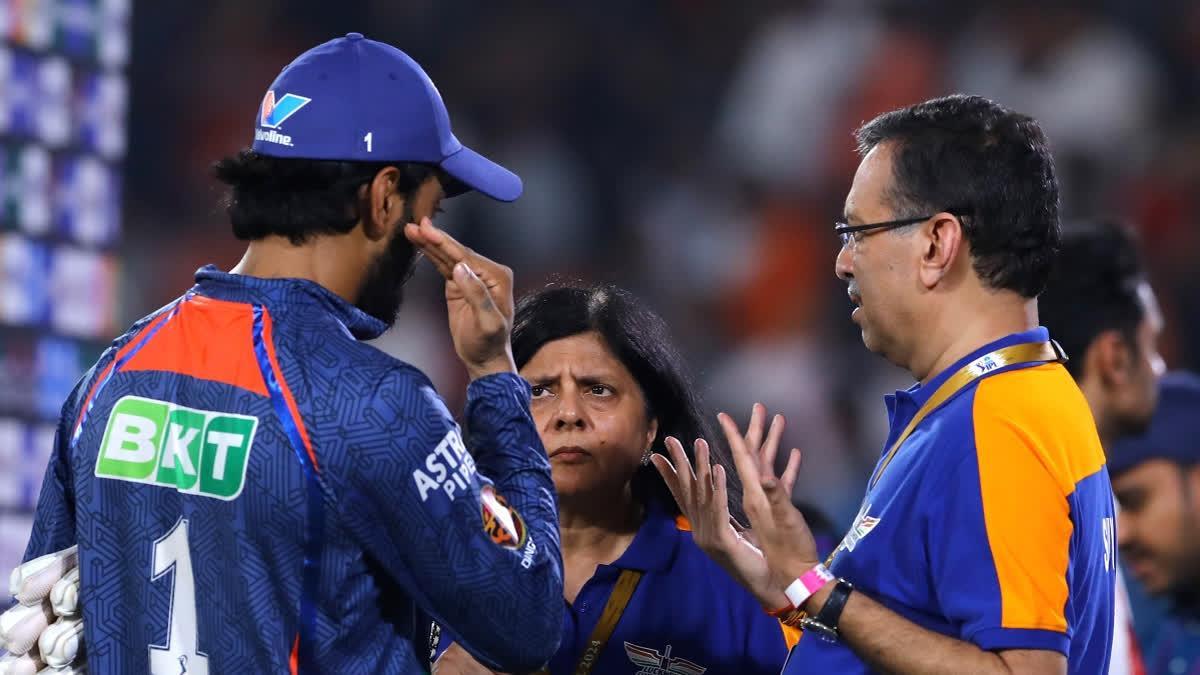(Motorsports news) According to popular belief and brass-plated belt buckles, everything is bigger in Texas. While the on-track action in Formula One’s sprint and US Grand Prix races at the Circuit of the Americas did not measure up to such expectations, the post-race drama in the stewards’ room surely did.
A pair of disqualifications overshadowed Max Verstappen’s increased competition for victory in the United States Grand Prix, even if it was somewhat predictable that the champion-elect would eventually creep through to the front from sixth on the grid after losing pole to track limits.
Stewards’ room drama thick, as two short planks prompt disqualification:
F1 is about cutting-edge technology as it is about entertainment and, amid all of the innovations and gizmos that festoon a modern-day car, there’s something poetic about a humble plank of wood derailing the best-laid plans. That both Lewis Hamilton and Charles Leclerc fell foul of the minimum plank thickness regulations and lost points-scoring finishes as a result was unfortunate, and certainly not of their own making.
The increasing bumpiness of the Circuit of the Americas, which becomes an increasingly spine-chattering experience year on year, combined with the low-slung cars on high fuel seemed to cause enough tail dragging to wear the rear part of the planks down.
This was the first incidence of illegal plank wear since Olivier Panis broke the rule at the 1994 Portuguese Grand Prix, when the restriction was introduced in the aftermath of Ayrton Senna and Roland Ratzenberger’s fatalities at Imola. Jordan won his appeal against Jarno Trulli’s disqualification at the 2001 US Grand Prix for the identical offense, restoring the Italian to fourth place.
Mercedes and McLaren demonstrate their progress:
Aside from his disqualification, Hamilton delivered a dedicated performance that gave Max Verstappen and Red Bull plenty to ponder about in the closing stages. Mercedes reneged on earlier plans to undertake a one-stop approach, leaving it in a sort of middle ground between the two; it was less problematic than keeping to the one-stop plan, but it still cost it in comparison to a ‘true’ two-stop.
Lando Norris was as brilliant, and his quick responses off the line translated into a first-half lead for the orange-tinged McLaren, which spun away from the Ferraris in the opening laps. With Verstappen closing in on him, it seemed inevitable that Norris would have to wait a bit longer for his first win. A small blunder at Turn 11 on lap 25 reduced a 2.2s lead to a 1.5s advantage in the span of a few hundred metres, which was decreased further over the next three tours as the three-time champion won his 15th race of the season.
Dennis set for long-time-coming F1 weekend debut:
Teams have been compelled to cram their mandated rookie appearances in practice into the Mexico City and Abu Dhabi FP1 sessions due to the bias of sprint weekends towards the conclusion of the season. Although not quite forced, their low-stakes character has made them appealing venues for younger and less-experienced drivers.
Among them is Formula E winner Jake Dennis, who is set to test Red Bull’s RB19 at the Abu Dhabi Grand Prix. The Nuneaton-born racer has been a long-time simulator driver for the Milton Keynes squad, having mostly given up racing in single-seaters after converting to GT racing. A surprise test with BMW resulted in a shootout with Sheldon van der Linde for an Andretti Formula E drive in 2020, which led to his title-winning season with the American squad this year.
Sprint race experiments once again hit or miss:
If Qatar’s sprint race was a success, owing largely to Oscar Piastri’s victory and a series of close races made possible by the Qatar track, then Austin was a huge flop. Beyond the first lap, the race swiftly fizzled out; Verstappen won at a canter, Hamilton and Leclerc followed, while Norris’ push on the Ferrari driver ahead came too late in the race.
Sprint success is proving to be increasingly track specific, and while Brazil was an early provider of successful, abbreviated races, determining additional permanent sprint weekends has been a subject of trial and error. During the 2021 trials, Silverstone and Monza were the weaker possibilities, while the Red Bull Ring performed admirably in 2022 and 2023, and the expansion to six sprint events in 2023 provided opportunities for new circuits.
Ferrari remains a one-stop shop for strategic gaffes:
Following the US Grand Prix, Charles Leclerc was already dissatisfied. Despite starting from pole, he was requested to make way for teammate Carlos Sainz as Ferrari chose to pursue different strategies with the two drivers, and Leclerc’s one-stop efforts were unable to prevent Sainz and Sergio Perez from passing in the latter stages of the race. It was a bad plan, and several teams who had committed to it changed their minds throughout the race.
The disqualification that Leclerc received after a barely consoling sixth-place finish will sting even than, but he had already expressed his annoyance with being labeled as a one-stop strategy. “There was something wrong in our numbers today, because we were far off the ideal race strategy,” the Monegasque concluded, explaining that Ferrari had initially thought the one- and two-stop strategies were identical in their data.
With Leclerc on pole, it begs the question of why Ferrari saw the need to employ the riskier strategy for the driver farther down the field. According to team principal Frederic Vasseur, there was “hesitation” on all sides, and failure to completely commit to the one-stop made the problem worse. Ferrari has showed operational improvements under the Frenchman’s leadership, but the work is clearly not done.
Also read: Ricciardo admits to “race rust” on his comeback to F1 after an injury






